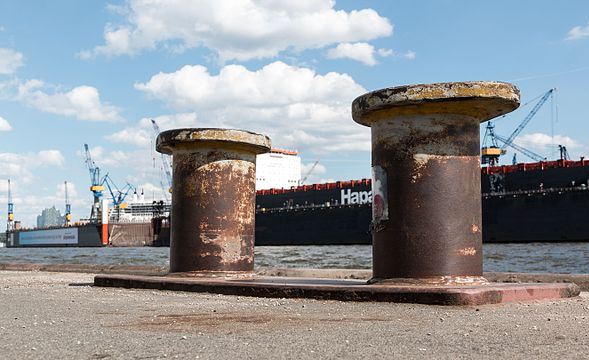 Total operating costs for the container ship, tanker, and bulker sectors were all down in 2016, with the insurance category making the biggest decline, according to “OpCost 2017,” the operating costs benchmarking tool of Moore Stephens.
Total operating costs for the container ship, tanker, and bulker sectors were all down in 2016, with the insurance category making the biggest decline, according to “OpCost 2017,” the operating costs benchmarking tool of Moore Stephens.
For container shipping, the container ship index was down by 1 point, or 0.6% year-on-year compared to a fall of 6 points in last year’s OpCost study.
There was a 0.4% overall average fall in 2016 crew costs, compared to the 2015 figure, which itself was 1.2% down on 2015. But in the container ship sector in particular, expenditure was up by 1.1% compared to the fall of 3.3% recorded for 2015. The biggest increase in this category was the 2.1% recorded for ships of between 2,000 and 6,000 TEUs, which in 2015 led the reductions in the container ship crew costs category with a fall in expenditure of 3.6%.
Expenditure on stores was down by 2.9% overall, compared to the fall of 4.3% in 2015. The biggest fall in such costs was the 5.1% recorded by owners of container ships of between 100 and 1,000 TEUs. In the same tonnage category, the fall in stores costs for owners of container ships of between 1,000 and 2,000 TEUs was 4.9%.
There was an overall fall in repairs and maintenance costs of 0.8% in 2016, compared to the 4.3% reduction recorded for 2015. In the box ship industry though, there were examples of small increases in repairs and maintenance expenditure.
The overall drop in costs of 3.0% recorded for insurance compares to the 3.2% fall recorded for 2015. No vessel types in any of the tonnage and size categories included in OpCost paid more for their insurance in 2016 than in 2015. The biggest reduction in such costs was the 5.2% recorded by container ships of between 2,000 and 6,000 TEUs.
Richard Greiner, shipping and transport partner, said: “This is the fifth successive year-on-year reduction in overall ship operating costs, although the reduction this time is less than half the figure recorded 12 months ago for 2015.”
The biggest cost reductions were those in the insurance category, he noted. “Insurance is a major item of expenditure for all owners and operators, without which most would not be able to operate on an international basis. The fact that such costs continue to fall may be due in part to a reduction in the incidence of major casualties.”
The next biggest cost reduction was in the stores category, where the slower-than-anticipated improvement in world oil prices doubtless had a continuing beneficial knock-on effect on lube oil costs in 2016.
Meanwhile, the reduction in repairs and maintenance costs in 2016 was 3.5% down on the figure for the previous year, said Greiner.
“This confirms that maintenance can only be postponed for so long by owners and operators who accept the need to invest in their ability to compete for business in a highly competitive market which is more tightly regulated than ever before. Strategic short-term lay-up is a waypoint rather than a destination.”
He continued: “Over the years, the OpCost study has recorded annual average crew cost increases of more than 20%, but there was a reduction in such costs this time of less than half of one percent compared to the figure for 2015. The continuing challenging shipping markets are doubtless a significant factor.”
Looking ahead, however, he expects operating costs to go up, citing positive business confidence and regulatory policies that affect the industry.
“Although 2016 was another difficult period for shipping, the year closed on a note of rising confidence, according to the Moore Stephens Shipping Confidence Survey. Owners and charterers were more confident, than for some time previously, of making new investments, and there were improved expectations of higher freight rates in all three main tonnage categories. The expectation, too, was that oil prices and the Baltic Dry Index could only go up.
“That increased confidence, which has carried over into 2017, should logically lead to greater activity, which will mean higher operating costs.”
Moreover, shipping companies are likely to start spending—or planning for—”the introduction of the likes of the Ballast Water Management Convention, the new global limit on SOx emissions from 2020 and initiatives to contain cyber-crime, which are assuming increasing importance in the industry,” said the executive.
“The results will also reflect, albeit subtly, the effect of geopolitical developments, which can seldom have been in a greater state of flux than they are today.”
Photo: Dietmar Rabich





